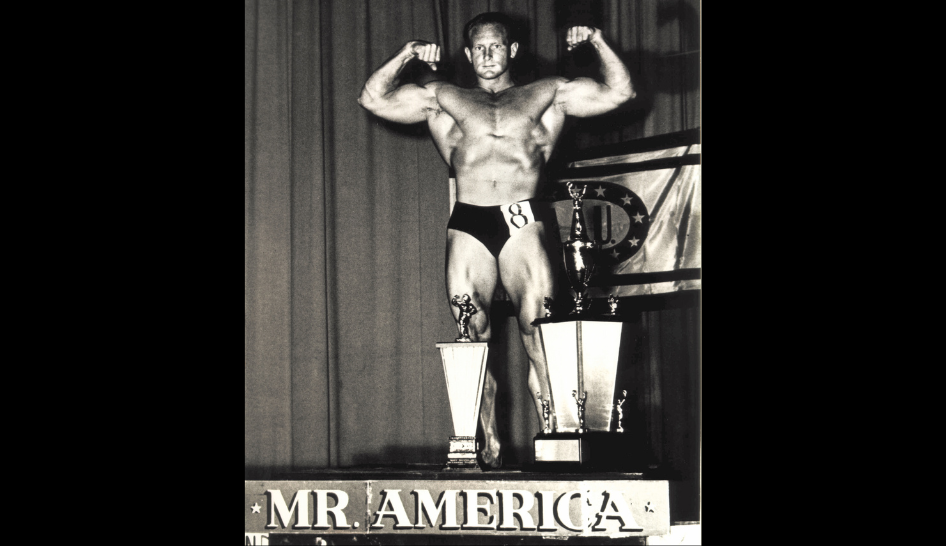Red Lerille forged a path to success that is uniquely his own, benefiting his members along the way. Read HFA's statement on the March 14 passing of Red Lerille.
Remembering Red Lerille
A pioneer in the industry as a champion bodybuilder and owner of Red Lerille's Health & Racquet Club, Red Lerille was honored at The HFA Show 2025 in Las Vegas as part of the first class of inductees into The HFA Hall of Fame.

Red Lerille
"Hello, goodbye, and toilet paper."
According to Lloyd “Red” Lerille, owner of Red Lerille’s Health & Racquet Club in Lafayette, Louisiana, those are the three most important things in business. Considering his successful 63 years in the health and fitness industry and his induction into the HFA’s inaugural Hall of Fame class, it’s hard to argue with his wisdom.
From Humble Beginnings to Industry Pioneer
Red’s journey began as a three-time high school wrestling champion in New Orleans. Inspired by his uncle Harold, Red saw fitness as transformative. In 1953, he trained at Ajax, Joe Gold’s New Orleans gym, honing his skills in bodybuilding and business. He began competing in contests and won the Mr. America title in 1960, before serving a stint in the Navy.
"When Red got out of the Navy, Mike Stansbury had him manage his gym in Lafayette,” recalls Red’s daughter Kackie Lerille. “He came with a bag of clothes and a unicycle. All he ever wanted was to own a little gym like that.”
With a $200 loan from his father, Red and his wife, Emma, opened Red Lerille’s Health & Racquet Club, a 3,500-square-foot gym in Lafayette, in 1963.
"The first club was small. We joke it was the size of a racquetball court,” says Kackie. “It was really a labor of love. My dad built his own equipment because you couldn’t buy any."
He eventually moved to his current location in 1965, upgrading to 4,000 square feet. But, as with bodybuilding, staying small was never part of the plan. In 1968, Red made his first addition, adding a vinyl pool. There was no going back.
“Red decided early on he was going to reinvest in the club and do something new every month,” says Mark Lerille, Red’s son, who now manages the property. “It didn’t matter if it was something small or something that would take time to finish, he was going to do something every month.”
It’s a tradition that continues to this day.
Building a Club—and a Community
From the beginning, Red didn’t just have an aptitude for growing his business; he also grew his circle of friends and admirers.
One of them is long-time friend and fellow bodybuilding legend Boyer Coe.
“When I was 16, I stopped off in Lafayette at Red’s club,” Coe says. “Red was very nice to me. I told him as soon as I graduate from high school, I want to move to Lafayette and learn everything I can from him. True to my word, the day after I graduated, I moved to Lafayette. We have been almost like brothers ever since.”
Coe remembers when Red saw women with tennis racquets walking through a local shopping mall in 1971. That’s when Red decided to expand into racquet sports, a novel idea for fitness centers at the time.
“In 1973, he got a loan from the [Small Business Administration] and built three indoor tennis courts and two racquetball courts, along with a pro shop,” Coe says. Coe himself opened a health food store next door to Red’s gym.
When racquetball lost popularity, Red converted some of his courts into fitness class studios and advised other club owners to do the same. Red has been a member of the HFA (then IHRSA) since nearly its beginning.
“Many operators of racquet clubs that were part of IHRSA at that time were asking Red what they could do to make up for the fact that people weren’t playing racquetball as much,” Coe says. “He told them that they needed to convert the courts into gyms and workout areas. And that’s what they did. He helped save that industry.”

Red poses after winning the Mr. America title in 1960.
Changing Lives for Generations
Red’s success isn’t just about anticipating trends—it’s about a commitment to community. Whether it was offering free memberships during crises, helping employees with interest-free loans, or working 12-hour days at the front desk, he prioritized people.
“It has never, ever been about making money or having fame and fortune for either him or my mom,” says Kackie. “During Hurricane Katrina, when people came to Lafayette from New Orleans, he would let them use the club for free.
Some of them stayed in Lafayette and never went back. He is a giver and wants to help everybody.”
This generous spirit has also led to a unique combination of the club having long-term members and long-term employees—and sometimes long-term members become employees.
“When I was a member, I ran into the IT guy at the club, who I went to school with. He told me the club was looking for someone to work in the office and that I should apply,” says Annette Landreaux. “I did, and here I am 43 years later. It’s a testament to Red and his family. You couldn’t ask for a better boss to work for.”
That IT guy, Phil Girard, has an even longer tenure at Red’s—49 years on the job. It all started when Girard filled in for his sister cleaning racquetball courts at the club.
Others who spent time with Red have used what they learned from him in their own lives and careers.
Former employee and long-term member Mike Guidroz learned from Red that hard work and attention to details lead to success. Applying these lessons helped Guidroz in his own career as COO of RR Company, a diversified group whose holdings include businesses ranging from hotels to health and wellness facilities.
“It’s fitting that Red goes in with this inaugural class of the Hall of Fame,” he says. “Babe Ruth was part of the inaugural class of the Baseball Hall of Fame. Red Lerille is the Babe Ruth of the fitness industry.”
Though Red recently stepped back from day-to-day operations, his legacy continues. Part of that legacy is keeping Red’s a family business. Mark currently manages the 195,000-square-foot facility, and Red’s grandson, Brady, is preparing to take the reins.
“We’re continuing the tradition of adding to the club every month,” Mark says. “Right now, we’re building a 24,000-square-foot women’s-only fitness area and locker room. We’ll keep making improvements so people can, as Red says, ‘Enjoy better health through exercise.’”
They’ll also have plenty of toilet paper.
This article was a team effort by several HFA experts.